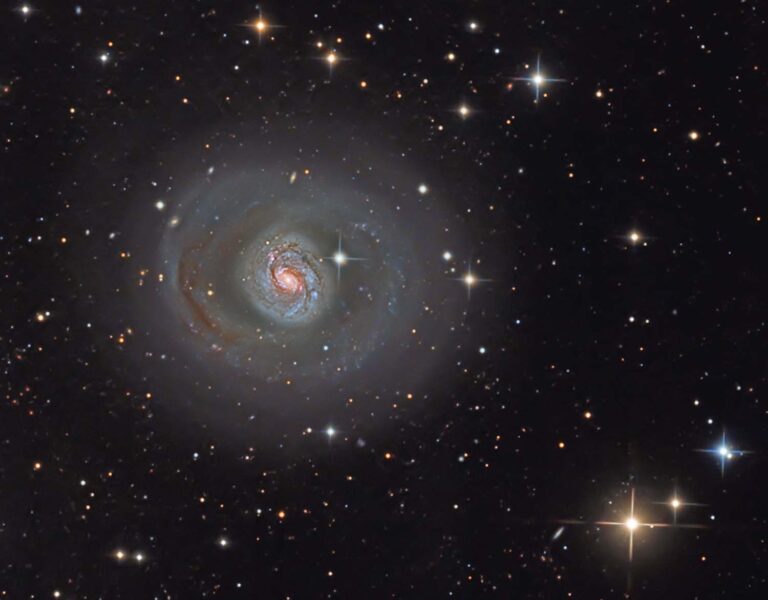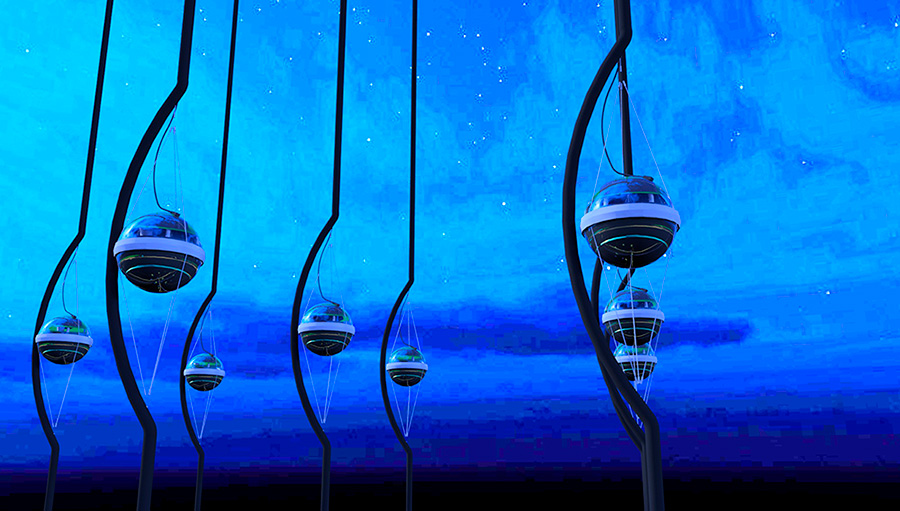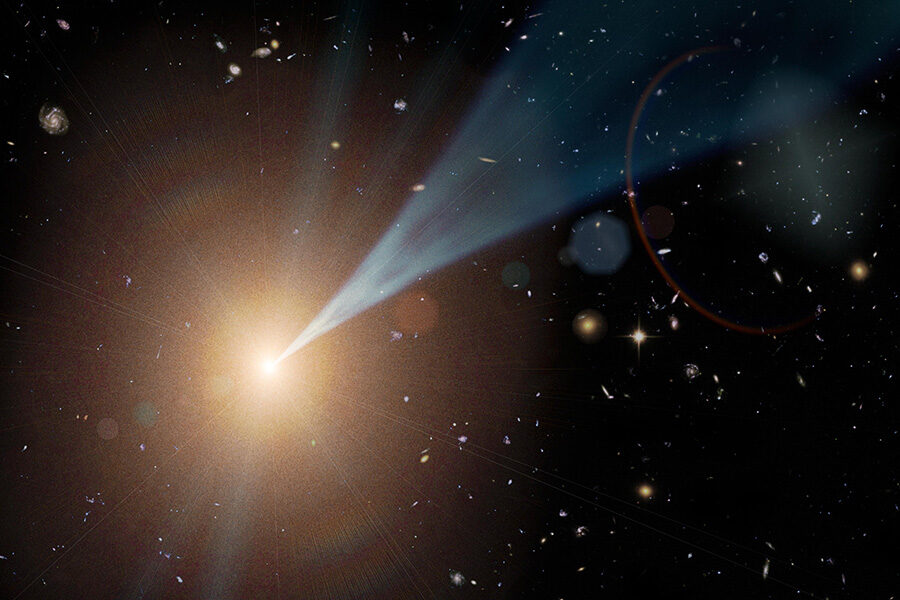Astronomers have connected dozens of neutrinos detected by the IceCube Observatory to a nearby galaxy, M77, aka the Squid Galaxy.

KuriousGeorge / S&T Online Photo Gallery
A nearby galaxy in the constellation Cetus, the Whale, is blasting high-energy neutrinos into space. “This is only the second object known to produce them,” says Aart Heijboer (Nikhef, Amsterdam). “I am super excited,” adds his colleague Suzan du Pree.
Neutrinos are uncharged, almost massless elementary particles that hardly interact with other matter. At near-light speed, they easily pass through everything that may come in their way. As a result, they are very hard to detect.
That’s where the IceCube Neutrino Observatory at the South Pole comes in. A collection of more than 5,000 light-sensitive detectors buried in one cubic kilometer of Antarctic ice, IceCube registers the tiny flashes of radiation produced by muons (heavy electrons) that result from rare interactions of neutrinos with atomic nuclei in the ice.

Jamie Yang, IceCube Collaboration
As reported in this week’s Science, the IceCube Collaboration has now found an excess of 79 high-energy neutrinos in data collected between 2011 and 2020, coming from the direction of the spiral galaxy NGC 1068. Also known as M77 or the Squid Galaxy, it’s just 46 million light-years away, located below the head of the Whale constellation. The 9th-magnitude galaxy is an easy target for backyard telescopes.
Buried behind thick clouds of dust, the galaxy harbors a supermassive black hole weighing in at tens of millions of solar masses. The galaxy’s core also produces X-rays and gamma-rays, suggesting that extremely energetic processes take place there. The high-energy neutrinos observed by IceCube were likely produced when energetic charged particles, accelerated by local magnetic fields, slammed into surrounding material.
According to Heijboer, who was not involved in the new IceCube result, neutrinos offer a unique chance to study the giant cosmic particle accelerator that apparently operates in the core of NGC 1068. Part of the X-rays and gamma-rays from the very core are absorbed by the surrounding material, while charged particles are diverted by galactic magnetic fields and cannot be traced back to their source.

NASA / JPL-Caltech
Four years ago, IceCube identified another source of high-energy cosmic neutrinos: an extremely active galaxy pointing one of its plasma jets toward Earth. This blazar, known as TXS 0506+056, is 3.7 billion light-years away. However, Heijboer says, the blazar produced neutrinos in a ‘flare,’ accompanied by a dramatic brightening in gamma rays detected by NASA’s Fermi Gamma-ray Space Telescope. “The new source,” he notes, “produces a continuous stream of neutrinos that we can count on in the future.”
Earlier this year, scientists reported a link between the arrival directions of high-energy neutrinos and the distribution of distant blazars on the sky. But the new discovery suggests that blazars aren’t the only neutrino factories out there.
In an accompanying commentary in Science, Kohta Murase (Penn State) writes that active galaxies like NGC 1068, which are much more abundant than blazars, “might help explain the amount of all cosmic neutrinos observed by the IceCube Neutrino Observatory.”
Two years ago, an earlier analysis of IceCube data had already hinted at NGC 1068 as a possible neutrino source. The new result, however, is much more significant, thanks to better data calibration and better techniques to derive the arrival directions of neutrinos from the data.
Future observations, in particular from the European KM3NeT neutrino observatory under construction on the bottom of the Mediterranean Sea, will probably clinch the case, as it will have a much better directional sensitivity than IceCube.
 0
0









Comments
You must be logged in to post a comment.